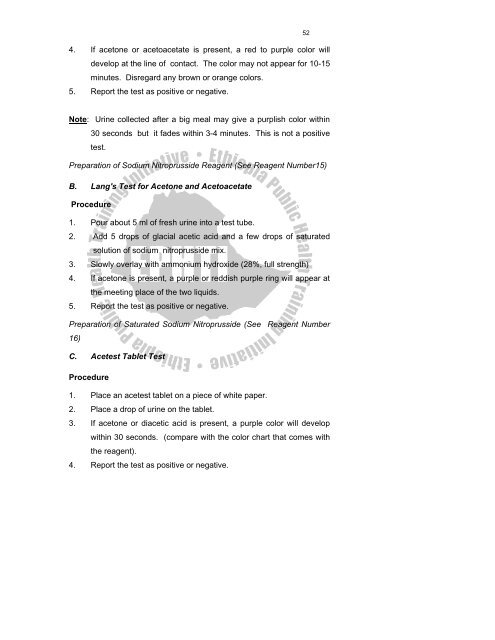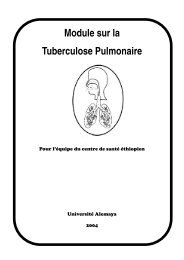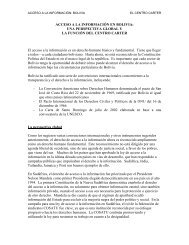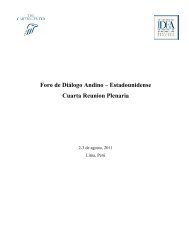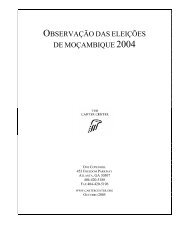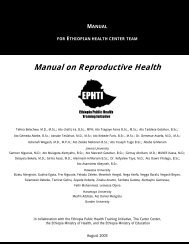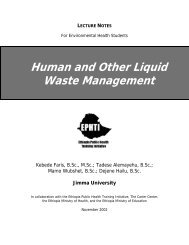Urinalysis - The Carter Center
Urinalysis - The Carter Center
Urinalysis - The Carter Center
You also want an ePaper? Increase the reach of your titles
YUMPU automatically turns print PDFs into web optimized ePapers that Google loves.
4. If acetone or acetoacetate is present, a red to purple color will<br />
develop at the line of contact. <strong>The</strong> color may not appear for 10-15<br />
minutes. Disregard any brown or orange colors.<br />
5. Report the test as positive or negative.<br />
52<br />
Note: Urine collected after a big meal may give a purplish color within<br />
30 seconds but it fades within 3-4 minutes. This is not a positive<br />
test.<br />
Preparation of Sodium Nitroprusside Reagent (See Reagent Number15)<br />
B. Lang's Test for Acetone and Acetoacetate<br />
Procedure<br />
1. Pour about 5 ml of fresh urine into a test tube.<br />
2. Add 5 drops of glacial acetic acid and a few drops of saturated<br />
solution of sodium nitroprusside mix.<br />
3. Slowly overlay with ammonium hydroxide (28%, full strength)<br />
4. If acetone is present, a purple or reddish purple ring will appear at<br />
the meeting place of the two liquids.<br />
5. Report the test as positive or negative.<br />
Preparation of Saturated Sodium Nitroprusside (See Reagent Number<br />
16)<br />
C. Acetest Tablet Test<br />
Procedure<br />
1. Place an acetest tablet on a piece of white paper.<br />
2. Place a drop of urine on the tablet.<br />
3. If acetone or diacetic acid is present, a purple color will develop<br />
within 30 seconds. (compare with the color chart that comes with<br />
the reagent).<br />
4. Report the test as positive or negative.


